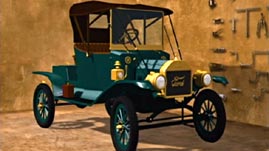As much as we value handmade goods, no automobile makers would even consider manufacturing cars by hand today. The time it would take to carve an engine block by hand from solid metal would make vehicles prohibitively expensive. And what would you do if you needed to replace some hand-made, one-of-a-kind part?
But such was the state of car manufacturing in the late 1800s and early 1900s. If not works of art, cars were certainly works of the finest craftsmanship. So much so that almost no one could afford one. Then, along came Henry Ford, who, in 1913, began an automobile manufacturing revolution that he hoped would put the automobile within reach of the common man.
Assembly line manufacturing was not a new concept in the early 1900s. In fact throughout the 1800s, several industries -- in France, Sweden, Britain, the United States -- used assembly lines to manufacture goods and, more importantly, created interchangeable, or identical parts, which required minimal craftsmanship or fitting during the assembly process. By the late 1800s, this system was being used in the manufacture of small firearms, clocks, textile machinery, sewing machines, and many other industrial products. The
American System of manufacturing, as it was called, however, had not yet been put into place by automobile makers.
Ironically, Ford based the design of his original automobile assembly operation on his observations of the meat-packing industry. On these
disassembly lines, Ford witnessed carcasses being moved past stationary workers who concentrated on a single task, and performed with maximal efficiency. He emulated what he saw.
In less than a year, Ford had reduced chassis assembly time from 12 1/2 worker-hours to 93 worker-minutes. His manufacturing design feats had successfully reduced the price of cars to an affordable level for many Americans, and forced his competitors as well as the heads of many other industries to embrace similar manufacturing techniques.
Unfortunately, assembly-line manufacturing's boon to overall productivity came at the expense of factory workers. Both job satisfaction and job security went down as a result of assembly-line manufacturing, because the need for skilled workers dwindled.


 Loading Standards
Loading Standards Teachers' Domain is proud to be a Pathways portal to the National Science Digital Library.
Teachers' Domain is proud to be a Pathways portal to the National Science Digital Library.
